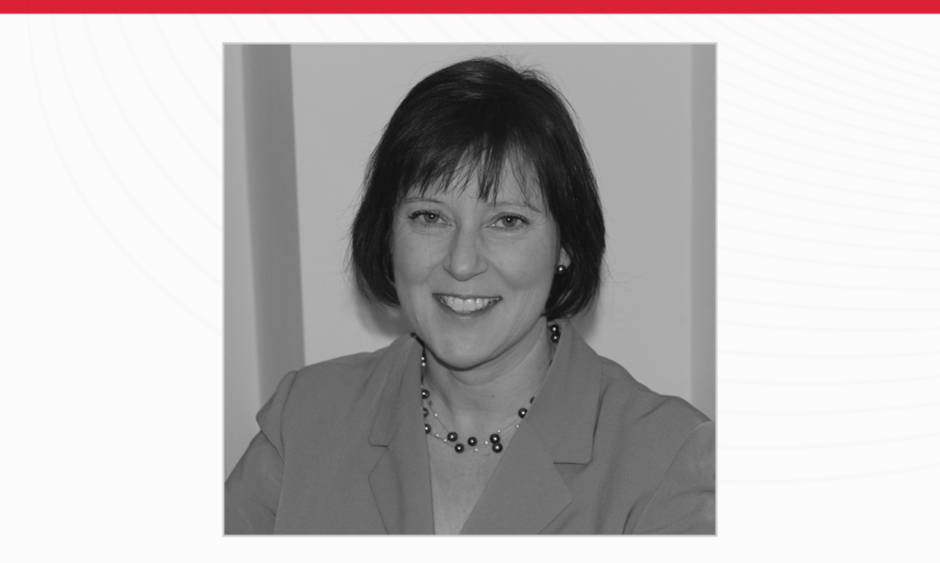Karen Walker-Bone | Professor and Honorary Consultant in Occupational Rheumatology, University of Southampton; Director, Arthritis Research UK/MRC Versus Arthritis Centre for Musculoskeletal Health and Work, Southampton, UK
![]()
What were the particular experiences or inspirations you had growing up that led you to undertake a degree in medicine?
To be honest, it was just all I ever wanted to do (apparently from the age of 3 years onwards)! Luckily, I found myself being competent at science subjects at school, and everything I did and learned confirmed my enthusiasm for medicine. I was fixated with television programmes about hospitals, doctors, and healthcare and read as many books as I could get my hands on that were about doctors and medicine. My mother was one of six children and my dad one of four. Neither of them went to university (my dad joined the army at 15). There are no doctors in the family and just one of my mum’s sisters is a nurse. Having nobody to discuss this with didn’t put me off at all; I was the first to go to university!
Additionally, what experiences during medical school and your doctor training led you to specialise in rheumatology?
I loved every specialty at medical school and after I qualified, I really thought I wanted to do paediatrics until I was unlucky enough to see a child in an intensive therapy unit who was brain dead after meningitis. I thought hard about palliative medicine, but rheumatology just drew me in; the more I did it, the more I liked it. I loved it when the same patient came back to see me over time, and I could find out what difference (if any) my suggestions had made. When I first started, we had only just stared using methotrexate in low doses and many patients were severely disabled with their inflammatory arthritis. We had 18 beds in our ward and people were admitted for bed rest and hydrotherapy or pulses of high-dose steroids intravenously. It was so important to me to talk to them, understand what they wanted, and help them reach their goals if at all possible. Most patients we see now are living much more normal lives, but I have never lost the need to find out what the patient wants and try to help them achieve it.
Having taken time out in between clinical training to complete a PhD in epidemiology, how do you think your prior clinical experience influenced the way you approached and completed your doctorate?
Interesting. I usually think of it the other way around; in other words, what my PhD brought to my subsequent career. I guess I was already organised, enthusiastic, and passionate and I had a clear idea of how disabling rheumatic and musculoskeletal diseases were and therefore how important it was to do research and make things better. I was also lucky to be able to continue clinical work alongside my PhD, funded by a PhD fellowship from Versus Arthritis (then called Arthritis Research Campaign), and I did a very applied and clinical piece of research. I studied the prevalence and impact of neck and upper limb disorders in 10,000 working-aged adults in different parts of Southampton. In total, we examined 2,000 of them and I personally followed-up 150, so it was a very ‘hands on’ PhD. Our data remain very highly cited even today.
Much of your work focuses on the quality of health in the work environment and how we can minimise the impact of musculoskeletal disorders. Could you explain any recent findings within this area and what effects these will have on the future workplace?
The origins of occupational health lay in describing hazards to health in the workplace that were previously undetected (e.g., asbestos and coal dust) and protecting workers. Thankfully, we know much more about these types of hazards now and we can focus more on prevention and workplace wellbeing. The fact is that we all spend roughly 10 complete years of our lives at work (the only thing we do more of is sleep: on average, for 23 years). Therefore, work needs to be a place where, of course, we are safe but also, we promote wellness and health. Mental ill health and musculoskeletal problems are very, very common even amongst healthy people but these can ‘tip over’ and become disabling. In both cases, work can cause or make these problems worse, so it is vital that we identify those situations in order to prevent ill health. However, a lot of people will have these conditions and still be at work, so we need to promote wellness in the workplace and enable people to retain their health through a good, supportive working environment. People who are made redundant or fall out of work through ill health suffer far more with debt, stigma, and needing to try and live on welfare benefits. Debt is frightening and makes health (particularly mental health) worse. As our life expectancy has gone up, we need to rethink working lives and workplaces. It may be that people of the future could have two or three careers over their lifetime and come into or out of career breaks for training, education, caring responsibilities, etc. There is no doubt that pensions would be more affordable if we could enable people to work to older ages. Workplaces need to change in the future.
Do you see foresee the remote working situation as a result of the COVID-19 pandemic having an impact on the relationship between work and musculoskeletal health? How?
That is a good question, and we might need a crystal ball! It could be good or bad. There are benefits in some ways of less time spent commuting, more flexibility of how and when to work, and having the potential to do exercise, stretches, and generally move more at home rather than be tied to a desk at work because everyone else is having lunch at their workstation. However, many people have felt isolated, worked at suboptimal workstations with inadequate equipment, and felt stressed by the use of technology and ‘Zoom fatigue’ from being on video constantly. How often do we have to watch ourselves whilst we talk to colleagues? Equally, teams do need contact and social interaction beyond work to enable their efficiency and effectiveness. Employers could use all these lessons to be more flexible with work. People can be trusted to get their work done without having to be monitored at their desk. Offering flexibility and choice about how and when people work could enable a lot more participation from older workers and people with health conditions. However, people like some choice and working from home is not for everybody. To sum up, the ‘good’ employers will benefit from the learning and will gain loyalty and high productivity by enabling flexibility but there are lots of not very good employers out there.
In terms of collaboration, what is needed from research institutes, the government, and society to effectively instate cost-effective measures that minimise musculoskeletal disorders in the workplace?
It interests me how different countries do this, and we perhaps need to look more widely. In the UK, healthcare is free to all at the point of delivery (how lucky we are) but that does mean that some less urgent care is more variable in quality and might require waiting on a waiting list. Unfortunately, musculoskeletal care is one of those areas. Physiotherapy, orthopaedic surgery, etc, are all things that can markedly improve pain and function and keep people working but people can fall out of work waiting for their treatment. At present, government does not ‘join up’ health costs and benefits costs. If the economic argument could be made, then better, quicker musculoskeletal care might well be cost-effective for keeping people at work. In other countries, insurance systems ‘kick in’ very soon after a worker goes off sick and these companies provide support and rehabilitation to get people working because it saves the insurance company money; they are incentivised to help the worker. We don’t have any such system here. Some people have paid sick leave for up to 6 months, some people self-insure or have employers who pay insurance, but many others have limited paid sick leave. This imbalance makes the costs very difficult to track as they are all coming out of different budgets. The individual with a health condition can find themselves stuck out in the cold, losing confidence, deskilling, and becoming anxious and depressed, all of which will hamper their recovery. Importantly, as I said earlier, employers vary and we really could look at some sort of incentives to employers for being ‘good’ employers: promoting healthy work practices, listening to their staff, supporting healthy lifestyles, and more.
What aims do you have to spread awareness of and apply your research across the world?
These issues are really a matter of public health. Work and health are inextricably linked. Some countries do this better than we do in the UK, but many others do not. We need to always keep capacity to do this research in the UK because our health and welfare system is fairly unique; something that might work in the USA might not work here because the levers are different. However, some lessons generalise. Workers who are involved actively, listened to, paid adequately, who have optimal working conditions, and who feel as much control as possible over their jobs are generally happier, healthier, and more loyal, with the added bonus of being more productive for their employer.
With a wealth of experience in teaching and developing modules and materials for medical students, what advice would you give to other university lecturers on how to deliver high-quality education while concurrently delivering inspiration and motivation to newer generations of doctors?
I wouldn’t feel at all qualified to give such advice, to be honest. Many others are far better than me. I genuinely love what I do and want to share it with others. I think one’s passion comes across to students and that they will ‘buy in’ with enthusiasm if they hear yours. I always review any lecture before I give it and keep it up to date. Things change all the time and, to be honest, I would be bored myself if I didn’t refresh them as I go along. The people who I chose as mentors and role models were those who were enthusiastic and passionate about what they did and that is what I try to be. I learned early that patients are the best teachers, so I use a lot of patient stories, and indeed actual patients, in my teaching when possible. It is the great privilege of being a doctor and delivering medical education.








